-
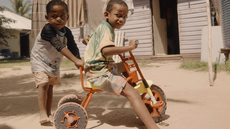
Tei Lase - Coral Gardeners first international branch in Fiji
Coral Gardeners has officially gone global with the opening of our very first international branch on the idyllic island of Malolo, in Fiji. This momentous opening, which has been two years in the making, sets the tone for our expansion strategy to scale up coral reef restoration around the world and scientifically prove that it is working as an adaptive solution to mitigate climate change and save the reef in time.
-

Earth Day with Aquaman actor & activist Jason Momoa
The 22nd of April is 'Earth Day' which is an annual event to demonstrate support for environmental protection. The official theme for 2023 is Invest In Our Planet. "Aquaman" actor Jason Momoa shares his passion for water activism, speaking on his company Mananalu, which "unplastics" the planet by eliminating single-use plastic bottles.
-
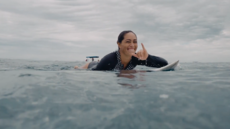
Hannah Bennett - Fijian Pro Surfer and Ocean Activist
Fijian pro-surfer and ocean activist Hannah Bennett was the first winner of the 'Dirty Wave Challenge' which was launched in 2018. The nonprofit 'Save the Waves' coalition launched a worldwide competition encouraging everyday beach goers and surfers to report trashed and threatened beaches. The prize? A $5k grant that gives back to the winner's coastal community. Check out how Hannah has used her grant in the video above. RipCurl Women also featured Hannah here - {{31941}}
-
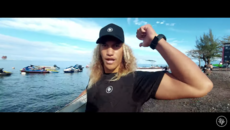
Coral Gardeners - Workshop at the Tahiti Pro World Surf League Event
The Coral Gardeners in Tahiti have started a new series which will take you behind the scenes of their many missions to revolutionise ocean conservation. In this episode they travel to their sister island from Mo'orea, where they host a workshop to educate the pros, local surfers, and kids on how to garden coral and protect their home reef. While they're there they go cave diving. Check out more of the Coral Gardeners story and why they are so passionate about saving the reef in the video below - {{29686}}
-
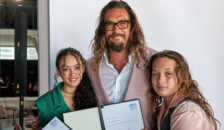
Jason Momoa: New UNEP Advocated for Life below water - UN Ocean Conference
Hear from actor/activist Jason Momoa ("Aquaman") about his passion for the ocean and achieving Sustainable Development Goal 14. Momoa will be formally designated UNEP Advocate for Life Below Water at this event. - Panelists: Jason Momoa, actor and UNEP Advocate for Life Below Water Susan Gardner, UNEP Head of Delegation and Director Ecosystems
-
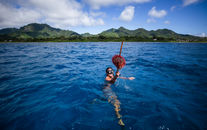
Protectors of the Reef - Taramea Hunters
Taramea Hunters, Tem Strickland and Mark Sherwin show us how they protect the reef by removing Crown of Thorns or Taramea/Alamea that damage vital coral in their home island of Rarotonga in the Cook Islands. These ocean lovers not only tell us how they connect to the reef but they show us how they care for it too!
-
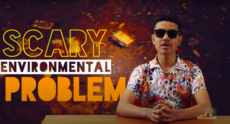
General Fiyah tells us How to Save our Oceans | Cultural Refresh
Our main guy General Fiyah and this time he's explaining Ocean Pollution ... An issue of many conscious Gen Z'ers minds, Ocean pollution is an alarming crisis that General Fiyah tries to get to the bottom on. He drops quick facts and lets us know how we should be living our lives so that we arent impacting the ocean negatively. - ‘Cultural Refresh’ is a series that explores Moana cultural practices and taonga, presented for our new generations of young Pasifika people.
-
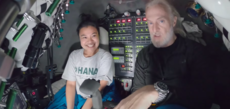
First Pacific Islander to reach the ocean's deepest point
Nicole Yamase is the first Pacific Islander, the third woman, and, at 29, the second-youngest person to visit Challenger Deep, the deepest known part of the Mariana Trench. The roughly 50km-long, 6km-wide Challenger Deep lies within the waters of Federated States of Micronesia (FSM) where Nicole calls home. Nicole is a marine scientist studying a PhD on the effects of climate change on macroalgae and nearshores marine plants at the University of Hawaii. Her experience in this field afforded her the opportunity to explore a place that has been visited by fewer people than have flown to the moon. A place thats Pitch black, 11km down and takes 10 hours to travel down to. {{23854}} Yamese said the once-in-a-lifetime opportunity to explore the depths of the ocean that sustained her ancestors, made her feel more connected to her culture and appreciate the complementary nature of science and traditional knowledge. “Our ancestors were scientists from the very beginning. They observed and collected data … they tested and tried new things,” she expressed. This Micronesian trailblazer hopes her experience will inspire Pacific Island women to pursue STEM and higher education. “If I can do it,” she said, “they can do it too.” And while women traditionally stayed near the shore, she called her experience a way to break gender boundaries and expectations. “We belong on shore,” said Yamase. “We belong all the way at the bottom, and everywhere in between too.”
-
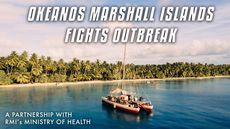
Okeanos Marshall Islands Partners with Ministry of Health
As the whole world battles COVID-19, the Marshall Islands is still faced with one of the most dangerous Dengue outbreaks in Marshallese history. On a mission to protect the outer islands, the RMI's Ministry of Health has partnered with Okeanos Marshall Islands to bring preventive healthcare to vulnerable communities. Okeanos Foundation's wind and solar powered #VakaMotu has given nurse practitioners greater access to communities throughout Marshall Islands, while allowing them to transport medicine that would otherwise not be able to travel by plane. Kommol to our amazing crew!
-
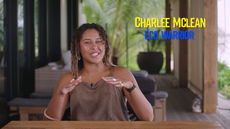
Pacific Eco Warrior - Charlee Mclean
Pacific Eco Warrior Charlee Mclean moved back to the Cook Islands from Perth, Australia and interns for the Ipukarea Society in Rarotonga. She shares some of the projects they're working on including bio diversity, eco sustainable development, youth and more plus her goals!
-
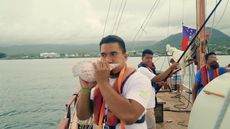
Pacific Eco Warriors - Talita O Le Lumana'i
Our Pacific Eco Warriors this week are the crew from the traditional sailing vaka: Gaualofa. They are part of a group called 'Talita O Le Lumana'i' - meaning 'Protectors Of The Future'. They learn about the ancient Pacific way of living - seafaring, navigation, sealife - and how to live more in tune with nature and live more sustainably #PacificEcoWarriors
-
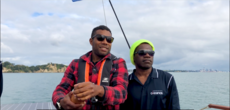
Crew Profile: New Caledonian Sailors Aile & Robert of Okeanos Waaqab
New Caledonian voyagers Aile Kwegnyii & Robert Streeter prepared for 3 months at the Okeanos Maritime Training Center in preparation for their sail to Vanuatu aboard Okeanos Waaqab. Today, Aile and Robert continue to support the ancestral bond between Melanesian sailors by hosting Okeanos Vanuatu in New Caledonia in partnership with Kenu One Project.
-
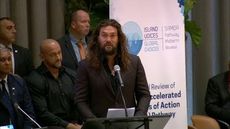
JASON MOMOA ADDRESSES THE UNITED NATIONS SMALL ISLANDS EVENT
Remarks by Jason Momoa (Actor and Ocean Activist) at the High-level meeting to review progress made in addressing the priorities of SIDS through the implementation of the Accelerated Modalities of Action (SAMOA) Pathway. {{14608}} The General Assembly will hold a one-day high level review of the progress made in addressing the priorities of small island developing States (SIDS) through the implementation of the SAMOA Pathway. The high level review will result in "a concise action oriented and inter-governmentally agreed political declaration". Multi-stakeholder Roundtable I: Progress, Gaps and Challenges. {{14610}} The theme of this roundtable is ‘Progress, Gaps, and Challenges’. Participants are invited to give insights on the implementation of the SAMOA Pathway thus far, and the hindrances that they have faced. Discussion here will include topics such as climate change, access to finance, and United Nations Development System Reform. {{14612}}
-
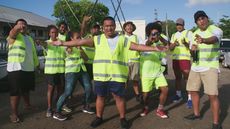
Fresh out Da Box - 4R Pacific
The 4R Pacific crew get together with the aim of creating a better and cleaner Samoa for the next generation and they show us how they're doing it with the 4R's: * Refuse * Reduce * Re-Use * Recycle
-
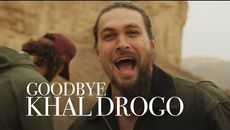
JASON MOMOA - SHAVES TO RAISE AWARENESS ABOUT PLASTIC KILLING OUR PLANET
Jason Momoa shaves for the first time since 2012 to raise awareness about plastic killing the planet & our oceans! "Goodbye DROGO, AQUAMAN, DECLAN, BABA! I'm shaving this beast off, it's time to make a change. A change for the better...for my kids, for your kids, the world. Let's make a positive change for the health of our planet. Let's clean up our oceans and our land. Join me on this journey. Let's make a switch to INFINITELY RECYCLABLE aluminum. Water in cans, NOT plastic." - Jason Momoa Jason Momoa's beard, 2012-2019 #RIP #FB to Jason without a beard - yeah, we'll take Jason without a beard too ;) {{12521}}
-

THE CORAL GARDENERS
Local Tahitian youth in Moorea have seen the coral in the lagoon & on the reef start to bleach over the last few years and they've decided to take action. They've banded together to form a NGO group called 'The Coral Gardeners' which has 2 goals. The first goal is to raise awareness & hopefully change the mindset of people around the world. They've done this through going to school classrooms, holding conferences and bringing awareness to the issues online. The second goal is coral restoration which is where the coral gardening comes in. Check out the video above to see how they get it done.
-

Dying Coral Reefs Found Around Samoan Island of Upolu | National Geographic
Scientists studied 124 coral reef sites around the Samoan island of Upolu, 2,600 miles southwest of Hawaii. While climate change is the main factors in coral die-offs worldwide, human activities like overfishing and pollution also contribute. The researchers thought reefs around remote Upolu might be faring better than sites like the Great Barrier Reef. Instead, they found that the coral was badly damaged and dying. In half the sites surveyed, live coral coverage was below one percent, and 80 percent of sites had below 10 percent coverage. Just two years ago the coverage may have been between 60 and 80 percent. Two species of fish found in the reefs were also 10 percent smaller than individuals around nearby islands. The researchers think a combination of physical damage from tropical cyclones, climate change, and local activity all play a role in the coral's dire situation. Click here to read more about the reefs surrounding Upolu.
-

OKEANOS MESSENGER
The crew of Okeanos Messenger braves 4,000 open-ocean miles to deliver Okeanos' newest vaka motu from Auckland to Pohnpei, FSM, training Micronesian crew members along the way.
-

Nuclear Legacy Sail with Okeanos Marshall Islands
Okeanos Marshall Islands braves a total of 1,200 nautical miles to reach one the most remote RMI communities: Enewetak - descendants of some of the most skilled boatbuilders in the Pacific now faced with the impacts of US nuclear testing and sea level rise. The Nuclear Legacy sail is a collaboration between the Marshallese, Tahitian & Fijian crew members of Okeanos Marshall Islands; along with educators from University of South Pacific, Pacific Resources for Education and Learning (PREL), University of Edinburgh and Marshallese poet/activist Kathy Jetnil-Kijiner. Filmed by Steve Holloway, Dan Lin & Dena Seidel.
-

VAKA MOTU
The Okeanos Vaka Motu (Boat for the Island) is a traditionally-based, fossil fuel-free canoe that operates on the most accessible energy sources in the Pacific: solar power, wind, and coconut biofuel. Okeanos Foundation’s current focus is on the development of partnerships to integrate Vaka Motus into the day-to-day lives of the islanders including transportation of teachers, doctors, and school children, and all goods and services, including disaster-relief to those devastated by extreme weather. This not only revives the traditional skills of Pacific voyagers but also provides opportunities for young people to stay on their islands and find a profession that provides a good balance of challenges and benefits.
-

SWAG bags, akos instead of plastic!
When your friend asks, “Do you want to come hang out at the market with me tomorrow?” You think “Awesome!” When they clarify that is starts at 4:30am, you start to imagine all sorts of excuses … is feigning death too drastic? But Samoa is a small place, and Apia is even smaller, so you be the good friend and you go. {{9367}} Bleary eyed, half asleep, you wander into the darkness that is the Sunday Farmer’s market located on the Savalalo road. A long row of vendors selling koko alaisa, baked goods, umu, and every other treat you’d need for to’ona'i snakes into the parking lot. The smells of caramelised sugar, smoky palusami, and warm Koko Samoa help your eyes to widen and your belly to grumble. {{9373}} As the sun rises, you realise that you are in the best place in the world! People you haven’t seen for ages stop by, relatives you didn’t know were in the country say hello and every vendor has a different way of grabbing your attention - whether it’s the sassy Fafa with her witty calls as she waves a cabbage leaf at you, or the young guys blaring dance music while selling taro, or us, with our stall full of strange fruits and vegetables, jams and chutneys, and freshly cut herbs all presented like a grand still-life painting. {{9378}} “Us” is a group of women growers and farmers who banded together because we had the same interests and challenges, but soon realized that we also needed a support network to seek advice and help. From that desire to nurture and share, was born SWAG (Samoa Women’s Association of Growers). Yeah, we thought the name was cool too 😊 and in a very short time, we discovered we all had one burning passion, to help make this planet a healthier, cleaner, and safer place to be…not just for our farms, but for our families. {{9382}} But how do you do that? The answers seemed overwhelming and complicated. We saw how every vendor at the market used plastic bags, hundreds being used every Sunday, and we decided that was where we would start. {{9386}} Over 400 tons of non-biodegradable plastic bags are imported to Samoa every year, that end up either in landfills, our back yards, or in our ocean. The country's use of plastic increased by more than 20% between 2011 and last year, according to research by MNRE. If those numbers aren’t scary enough, 70% cent of all the litter in the country's waterways and ocean are plastic! {{9389}} You may have heard of the Great Pacific Garbage Patch which is the largest accumulation of ocean plastic in the world and is located between Hawaii and California? It covers an estimated surface area of 1.6 million square kilometres. While it is a huge and dramatic example of how plastic pollution is affecting our ocean, you may not know about the Plastic debris at the micro-, and potentially also the nano-scale, which are also widespread in the environment. {{9391}} Microplastics have accumulated in oceans and sediments worldwide in recent years, with maximum concentrations reaching 100,000 particles m3 (that is crazy teeny in non-science nerd terms). Due to their small size, microplastics are being ingested by fish, birds, and a whole host of ocean wildlife. While most plastic has been found in the guts of fish, and would therefore be removed before eating, some studies have warned that microplastics, particularly at the nanoscale, could transfer from the guts to the meat. There is no evidence of harm to humans from those quantities, but contamination is widespread, and we need to learn more before we can assume all is safe. {{9395}} Reading stats like the ones above can cause one to feel overwhelmed, but we couldn’t let that get in the way of creating a solution. So, we decided to start small in hopes of influencing our neighbours. Slowly we reduced and then finally stopped the use of all plastic bags at our stall. When customers needed to something to carry off their purchases, we gave away free akos, handwoven baskets made from the leaf of the coconut tree. They are the most common way every farmer carries items from one place to the next. Simple, light, and totally biodegradable! What more could you ask for? {{9400}} My father Nusi is a koko farmer, and he is the one who taught me how to weave them. We had to adjust the size and style to be smaller and more attractive “Imagine an ako that you can carry your lip gloss in rather than 20 taros.” I said to my dad as we problem solved. After several tries, we found the right style and the right size. And that was where the #SWAGbag was born. {{9405}} Now we encourage our customers to refuse, reuse, reduce, and recycle. We laugh as we hand them their “sassy” the little akos, but all the while reminding them that plastic bags are not good for our planet or our country. Samoans and Pacific Islanders were innovative enough to create these woven pieces, probably traversing the once pristine Pacific with their belongings and food packed in them. We just want to celebrate our cultural tradition as we seek to find answers to the pollution problems that we all face. {{9413}} Thankfully we are not alone in this search, the Government of Samoa has just announced that it will ban all single-use plastics starting in 2019. This includes plastic bags and straws, and will eventually involve styrofoam containers and cups. The Government of Vanuatu has also made the same commitment earlier in the year, and the hope is that soon all Pacific island nations will follow suit. But even as govenrments institute new laws and policies, we all need to do our part to find alternatives to everyday plastics. We need to be willing to change our attitudes and our habits. And we need to do it now. {{9418}} If you’re in Apia and feeling hungry on a Sunday morning, come to our stall and hang out with us! We’ll share some jokes, give you a sample of something tasty, and encourage you to use akos instead of plastic bags 😊 In other words, we’ll show you the same alofa that we have for our families and our planet! {{9425}} http://www.fao.org/3/a-i3720e.pdf
-

PALAU PLEDGE
Written with the help of Palau’s children, every visitor must pledge to heal and secure the natural environment for future generations. To protect its stunning yet fragile, vulnerable environment from tourists’ carelessness and neglect, the Pacific island-country of Palau had to do something innovative and bold. So it changed its entry visa processes, claimed to be a world first, the "Palau Pledge" is stamped onto visitors' passports and must be signed upon arrival in the country before they can enter: a public - and very personal - promise to protect Palau for future generations. Learn more about this immigration policy precedent that puts conservation first at palaupledge.com
-

Praise Song for Oceania
Chamorro poet Craig Santos Perez from Guam in Micronesia collaborated with Hawaiian filmmaker, Justyn Ah Chong to create a Poem/Short Film for World Ocean's Day. The 4 minute video is titled 'Praise Song for Oceania' and it has been screened at the Guam International Film Festival, the Hawaiʻi Film Festival, and Transoceanic Visual Exchange (Australia & Barbados), and the Native Spirit Film Festival (London).
-

CORAL BLEACHING
Researchers are struggling to find anywhere in Pacific Ocean untouched. By ABC.net.au Scientists aboard a French research ship say they have been shocked to see the extent of coral bleaching across the Pacific Ocean, just halfway through their two-year voyage around the world. The vessel Tara has been sailing around the globe for more than a decade to study the effects of climate change on the ocean. Its current expedition will cross 11 time zones and span 100,000 kilometres from Europe to Asia and back again, and the group claims it is the biggest study of this scale across coral reefs. The focus is how coral reefs in the Pacific are adapting to climate change, and on a stopover in Sydney, captain Nicolas De La Brosse said the extent of damage is already deeply troubling. "What we've seen in really isolated spots like Samoa for example, even though it's very far away from [developed] countries with pollution, we struggled to find any coral life," he said. Mr De La Brosse said nowhere was immune to the effects of global warming. "It doesn't matter where you are in the Pacific, coral is starting to bleach." {{5559}} He said data was still being collected and analysed and the final results would be released at the end of 2019. The ship is not just a floating science lab — it is a temporary home for 16 people, including engineers, scientists, sailors, crew and, of course, a cook who whips up French dishes and sometimes, local favourites. "When we arrived in Australia I made a banana cake because I know in Australia you have this cake," chef Dominique Limbour said. Spending months at a time at sea together in the 26-metre vessel can be a challenge. {{5557}} "We have to work all together. You can't argue with someone else — you have to be pretty easygoing," Mr De La Brosse said. After its Sydney stop the ship will head north to study the extent to which coral in the Great Barrier Reef is adapting to climate change.
-

HAVE YOUR SEI
By Brianna Fruean I grew up on old stories of life in Samoa as told by my grandfather. He narrated beautiful stories of fishing adventures he and his brother would go on in our family village, Faleula. Fishing was a part of his life as a Samoan, and something he would later share with my father and uncles. My grandfather’s love for the ocean and what it provides was something my father passed onto me. Sunday mornings at the fish market was our ritual. {{5413}} Years ago, as a little girl I would love the abundance of variety and colour that the Pacific Ocean had to provide. The display of the ocean as if it was plucked straight from Tagaloa’s hook to be displayed before my very eyes. As I grew older I started to see a change in that variety, a change in colour and a change in sea life. {{5431}} Climate change and its effect are becoming clearer in the eyes of those living in Pacific. The stress of the rising ocean temperatures is killing our sea life and it is seen in our fish stock. Changes in weather patterns are affecting our plantations and threatening our food security. {{5427}} Our farmers can’t be certain of their yields anymore, not knowing if there is a flood or drought around the corner. Sea level rising has turned our beautiful ocean that we were taught by our ancestors to love, into something we should now fear. There are lava fields in Savaii rapidly being engulfed by the sea. {{5415}} In Fagamalo to date, approximately 50 meters of the coastline have been eroded by cyclones and subsequent strong wave surges. Our islands are in the eye of the storm. {{5425}} Climate change is our reality, it is happening now and it is happening fast. The climate crisis is something we can’t stay quiet about. It threatens our very livelihoods and is very much our business! {{5421}} I am passionate about raising my voice and fighting for climate justice because one day when I have children of my own, I don't want to just tell them stories, I want to show them the paradise that my grandfather spoke of. {{5411}} Join Brianna & the 350 Pacific Climate Warriors and #HaveYourSei - click on link below Sign the declaration here
-

Coral Gardening - BBC Earth
Check out this awesome doco on the conservation efforts by fisherman in the Pacific Ocean! In Fiji, scientists are working with fishermen to save coral reefs and the diverse marine life that feed off them. Although fishing has damaged the South Pacific's coral reefs, they are hoping to rebuild them using this method of coral gardening. These coral gardeners are seeing the new reef blooming, and fish returning. Dive in at http://www.bbcearth.com/lifeis for more videos, pictures and stories.
-

Radioactive waste leak imminent in the Pacific
Runit Dome on the Enewetak Atoll houses over 80,000 cubic meters of radioactive waste; now locals, scientists and environmental activists fear that a natural disaster bought on by climate change could tear the concrete dome open, releasing its contents into the Pacific Ocean. The radioactive waste is the legacy left behind by the US after 12 years of nuclear tests in the region at the beginning of the Cold War, which sits roughly halfway between Hawaii and Australia. In 1948, the local population of Micronesian fishermen and subsistence farmers were evacuated to another atoll 200 km away. “Runit Dome represents a tragic confluence of nuclear testing and climate change,” said Michael Gerrard, director of the Sabin Center for Climate Change Law at Columbia University in 2010. “It resulted from US nuclear testing and the leaving behind of large quantities of plutonium,” he said. “Now it has been gradually submerged as result of sea level rise from greenhouse gas emissions by industrial countries led by the United States.” About 67 nuclear and atmospheric bombs were detonated on Enewetak and Bikini between 1946 and 1958 - which is roughly equivalent to 1.6 Hiroshima bombs detonated every day over the course of 12 years. The detonations covered the islands with radioactive debris, including Plutonium 239, which has a half-life of 24,000 years. When the testing came to an end, the US carried out an eight year clean-up, but refused to fund a comprehensive decomtamination programme to make the atoll fit for human settlement again, leaving it's inhabitants without land. Yet in 1980, as the Americans prepared their own departure, the indigenous dri-Enewetak were allowed to return to the atoll after 33 years. There has been no compensation set for the people of Enewetak, and their traditonal livelihoods have been destroyed because of it - the US bans the export of fish and dried copra on the grounds of lingering contamination. The growing population survive on a trust fund from the US, but payouts come to just $100 per person say locals. Those who can afford it have taken advantage of the Compact’s visaless travel benefits and have migrated to Hawaii. “Enewetak has no money. What will people do to make money?” asked Rosemary Amitok, who lives with her husband Hemy on the atoll’s largest island.
-

350 Pacific Climate Warriors: Canoe Blockade
Climate change affects everyone and everything around us, especially in the Pacific. Check out these warriors and their stance on Global Warming and the fossil fuel industry! On the 17th of October, 2014, 30 Pacific Climate Warriors representing 12 different Pacific Island Nations, paddled out into Newcastle, Australia, in traditionally built canoes with one goal in mind: to block coal ships from passing and highlight the devastating impact the fossil fuel industry has on our Island homes. Newcastle is home to the largest coal port in the world, and the actions of these warriors speaks volumes to the heart and mana of our Pacific people!
-

Palau set to create one of world's biggest marine sanctuaries
Palau's president Tommy Remengesau is set to sign a law turning most of the country's waters into a marine sanctuary, which will be one of the biggest in the world. The sanctuary will be about the size of California — making it the world's sixth largest area in which commercial fishing and oil drilling will be banned. More than a year after it was first announced, the marine park will be signed into law this week after Palau's congress passed the bill. Seth Horsmeyer from The Pew Charitable Trusts, which provided technical support on the project, said the people of Palau support the sanctuary. "A testament to how much support there is here, especially from Palau's local fishermen, is that no-one voted against it in either house of the congress," he told Radio Australia's Pacific Beat. The 500,000-square-kilometre reserve covers 80 per cent of Palau's territorial waters. Mr Horsmeyer said there would be tight rules surrounding the sanctuary. "Once it's fully implemented, there are strict rules for how you need to move through Palau's waters," he said. "You can't have your fishing gear out, you have to go in a straight line at a certain speed — all these kinds of things that help make monitoring and enforcement simpler." Mr Remengesau said his country will promote scuba diving, snorkelling and eco-tourism as an alternative income to commercial fishing. "We're not just closing our waters and throwing away the key," he told a UN oceans conference last year. "We're closing our waters because we will do our part in making sure that there's healthy stocks of fish in Palau that can migrate to other places, and that there are other options to grow the economy. "These are important ways to make a living and at the same time preserve the pristine environment that we have been blessed with in Palau." -ABC News
-

More plastic than fish in the sea by 2050
One refuse truck’s-worth of plastic is dumped into the sea every minute, and the situation is getting worse. Source: The Guardian As a record-breaking sailor, Dame Ellen MacArthur has seen more of the world’s oceans than almost anyone else. Now she is warning that there will be more waste plastic in the sea than fish by 2050, unless the industry cleans up its act. According to a new Ellen MacArthur Foundation report launched at the World Economic Forum on Tuesday, new plastics will consume 20% of all oil production within 35 years, up from an estimated 5% today. Plastics production has increased twentyfold since 1964, reaching 311m tonnes in 2014, the report says. It is expected to double again in the next 20 years and almost quadruple by 2050. Despite the growing demand, just 5% of plastics are recycled effectively, while 40% end up in landfill and a third in fragile ecosystems such as the world’s oceans. Much of the remainder is burned, generating energy, but causing more fossil fuels to be consumed in order to make new plastic bags, cups, tubs and consumer devices demanded by the economy. Illustration: Ellen MacArthur Foundation Decades of plastic production have already caused environmental problems. The report says that every year “at least 8m tonnes of plastics leak into the ocean – which is equivalent to dumping the contents of one garbage truck into the ocean every minute. If no action is taken, this is expected to increase to two per minute by 2030 and four per minute by 2050 “In a business-as-usual scenario, the ocean is expected to contain one tonne of plastic for every three tonnes of fish by 2025, and by 2050, more plastics than fish [by weight].” Illustration: Ellen MacArthur Foundation A carelessly discarded plastic bag can break down in the sea, especially in warmer waters, but the process releases toxic chemicals that may be digested by fish and end up in the human food chain. Research released a year ago found there were more than 5tn pieces of plastic floating in the seas, many just 5mm across. Larger items can be a threat to sea life such as turtles and seals, which swallow them. Scientists have also found that countless tiny fragments drift to the bottom of the oceans, carpeting the sea bed. The environmental and health impact of this is unknown. The report concludes that the plastics industry is comprehensively failing to address these issues. Dr Martin R Stuchtey of the McKinsey Center for Business and Environment, who helped produce the report, said a wave of innovation could be transformative. “Plastics are the workhorse material of the modern economy, with unbeaten properties,” he said. “However they are also the ultimate single-use material. Growing volumes of end-of-use plastics are generating costs and destroying value to the industry. After-use plastics could, with circular economy thinking, be turned into valuable feedstock.” The plastics recycling industry is also reeling from the recent plunge in the price of oil. At $30 (£21) a barrel, it is more expensive to recover plastics and process their hydrocarbons to recycle them than to use virgin crude. Solving the problem will not be easy, especially as the industry is under pressure to produce more to meet growing demand from emerging markets. Bioplastics are currently more expensive to make than the petro-alternative, and recycling systems are inefficient. Ellen MacArthur has become an advocate for ‘circular economy’. Photograph: Linda Nylind for the Guardian MacArthur, who broke the record for the fastest solo circumnavigation of the globe in 2005, says fundamental reform is needed. Her vision is for a “new plastics economy” in which the industry, governments and citizens work together to ensure that plastics never become waste and cut the leakage into natural systems. “Linear models of production and consumption are increasingly challenged by the context within which they operate, and this is particularly true for high-volume, low-value materials such as plastic packaging,” she said. One part of the solution is to rethink the way goods are packaged, cutting the demand for plastic. Water-soluble film, for example, can be used to wrap small items. Hard-to-recycle plastics such as PVC and expandable polystyrene could be phased out. Manufacturers could redesign plastic items so they can be reused better, and rethink their production methods to make recycling easier. More products could be made out of plastics which can be composted on an industrial scale, including rubbish bags for organic waste and food packaging for outdoor events, canteens and fast food outlets. The report admits, however, that a “moonshot” approach is also needed, to create plastics that can be both recycled and composted. Currently it is one or the other. Other options are to develop “bio-benign” plastics, or chemical tagging to stop used plastics slipping through the system and into the sea.
-

Sea Cucumbers are in sharp decline
Sea cucumbers may resemble giant turds, but they're arguably just as crucial an element of ocean ecosystems as high profile conservation favourites like sharks or blue fin tuna. And despite their unappealing looks and appalling manners (when threatened they eject a tangle of spaghetti like strings out of their bums) they can fetch whopping sums since they are a popular delicacy particularly amongst Chinese populations as well as being used in traditional medicine. It's this market that has been driving down sea cucumber populations in recent times and some studies have estimated that global stocks have been depleted by as much as 50%. Fiji is just one place where sea cucumbers are under immense pressure in the Coral Triangle... Sea cucumber on the sandy ocean floor. Feeling threatened, this sea cucumber is discharging sticky threads from its intestines as its defence mechanism.. Photo by Jürgen Freund Sea cucumbers are flexible, elongated echinoderms. They live on the sea floor in reefs, lagoons and coastal shallows with some species inhabiting deeper waters. They move about slowly over the sea bottom like scavengers, feeding on debris found in the sand and sediment. Some species bury themselves in sandy mud while others perch on coral or rock crevices. For many thousands of people in Fiji, diving for sea cucumbers provides a livelihood. The trouble is, overfishing is causing a drastic depletion in sea cucumber numbers - a problem exacerbated by the fact that some of Fiji's Pacific neighbours have placed a moratorium on the fishery, recognising the problem. Vani, a rare female free diver from Nukusa Village Udu Point collects an assortment of sea cucumbers in the reef shallows. Sea cucumbers are processed into a dry food product called bêche-de-mer and exported to Asian markets, mainly for the Chinese. Sea cucumbers have been harvested and processed into bêche-de-mer since the eighteenth century, but they have been increasingly exploited through the nineteenth and twentieth centuries as the Chinese population, appetite and buying power has exploded. As sea cucumbers become harder to find in Fiji, divers are taking ever greater risks to find them, using compressor engines to pump air into common garden hoses so they can go deeper for longer. Unfortunately, most have no understanding of decompression sickness - many communities are losing significant numbers of fishers, often young men, to the bends. Sea cucumbers may look alien or even unpleasant to some eyes, yet they are extremely lucratrive. And like other seafood markets like bluefin tuna and grouper, buyers are willing to pay a premium for rare or very large specimens. Sandfish for example are a protected species, yet a recent report discovered sandfish being sold in a shop in Hong Kong for a whopping $1668 per kilo. Sea cucumbers are sometimes harvested by hand at low tide on the reef flats but sadly, diving for deep water species is fast becoming the norm as divers take ever greater risks for high value sea cucumbers, which can no longer be found in shallower waters due to overharvesting. Sea cucumbers of the same size are boiled to preserve their flavour and wholesomeness. Photo by Jürgen Freund The problem is not just the disruption to a fishery that provides livelihoods and that could be managed sustainably - it's the impact on the marine environment. Scientists are only just beginning to understand these invertebrates and their role in the ecosystem...Sea cucumbers much like earthworms, filter all kinds of detritus and waste, excreting filtered sediment and calcium carbonate that forms the basis of new coral reefs. They also consume algae, preventing it from becoming too prolific. Sea cucumbers boiling on an open fire for half an hour before they are dried out in the sun in Kavewa Island.. Photo by Jürgen Freund Drying or curing bêche de mer can take up to a week or even two weeks depending on their size and the weather conditions.. Photo by Jürgen Freund Storing dried bêche-de-mer does not require refrigeration. China, Hong Kong and Singapore are the main re-exporters and these countries are within easy reach of the Pacific Islands with the trade linked through regular shipping lines. After the slitting and removal of their gut and gonad, the sea cucmbers are boiled twice before sun drying or sun-curing as it's sometimes called. It's a sadly familiar tale of markets driving fisheries beyond their capacity, before science has a chance to assess the possible impacts. For example, recent research suggests that sea cucumbers help maintain alkilinity, a hugely useful ecosystem service in the context of ocean acidification, which threatens to cause mass coral reef bleaching. These sea cucumbers in the drying stage were taken from a dive camp in Yadua Island with 20 to 30 divers usually head out to the Great Sea Reefs to scuba dive for high grade sea cucumbers.. Photo by Jürgen Freund It is possible to manage sea cucumber harvesting sustainably, but it requires proper regulation, quotas and in some areas, moratoriums to allow stocks to recover. Source: The Coral Triangle
-

Tiny Island Chain Wants to Create the World's Largest Ocean Sanctuary
In an effort to protect fisheries and preserve one of the planet’s healthiest marine ecosystems, communities in a remote archipelago south of Tahiti are working to establish the largest fully protected marine reserve on the planet. Source: Huffington Post The proposal, which municipalities in the Austral Islands presented to the French Polynesian government on Monday, would ban fishing in more than 385,000 square miles of ocean surrounding the island chain and establish sustainable coastal fishing areas around each of its five inhabited islands. The Pew Charitable Trusts, which helped the communities draft their proposal, said in an announcement on Tuesday that islanders hope the reserve will “help maintain healthy fish stocks to feed their families and support local fishermen while maintaining Polynesian customs that date back hundreds of years.” The reserve, if approved, would be roughly the size of California, Nevada and Arizona combined. THE PEW CHARITABLE TRUSTS: A fisherman off the coast of the Austral Islands. Jérôme Petit, director of Pew’s Global Ocean Legacy campaign in French Polynesia, told The Huffington Post that the 6,000-plus residents of Rimatara, Rurutu, Tubuai, Raivavae and Rapa are concerned about the environmental damage affecting the world’s fisheries. “They say, ‘We fish now in one day what we could fish 20 years ago in one hour,’” Petit said. The reserve would extend roughly 200 nautical miles around each island, with the exception of the islands’ northern coasts. Sustainable coastal fishing areas extending 20 miles from each island would allow local anglers to fish from boats that are less than 25 feet long, according to the proposal. Petit told HuffPost that the “whole community is really on board” with the idea. The only opposition, he said, came from large fishing operations in Tahiti, which rarely fish in the area but voiced concerns that the reserve would prevent them from doing so in the future. According to the proposal, fish from Austral waters account for less than 2 percent of French Polynesia’s overall catch, so the reserve wouldn’t have much of an impact on commercial fishing operations. “We are pretty confident it will go through,” Petit said by email. “The only question is when. But since there is such as strong public support, the government will probably move forward rather quickly.” THE PEW CHARITABLE TRUSTS: This map shows the extent of the proposed protected area around the Austral Islands. The sanctuary’s proposed name, Rāhui Nui Nō Tuhaa Pae, or “the big rāhui of the Austral Islands,” is a reference to the traditional Polynesian practice of rāhui, which involves conserving a resource by restricting access to it. “In the 1980s, we witnessed overfishing along our coastlines as modern fishing techniques and freezers arrived to our island,” Tuanainai Narii, the mayor of Rapa, said in a statement. “We brought our fish stocks back to healthy levels by reinstating a coastal rāhui.” Now, Narii added, the island communities have seen the threat facing the world’s oceans and “recognize that more must be done to conserve pelagic fish stocks.” Global populations of scombridae, the family of fish that includes tuna and mackerel, declined 74 percent between 1970 and 2010. According to Pew, the Austral Islands are a “hot spot of marine biodiversity.” Of the 455 species of mollusks found there, 98 are endemic. The islands are also home to numerous species of sharks, rays, corals and fish. TIFFANY LAITAME/The Austral Islands’ proposal would establish sustainable fishing areas extending 20 miles from each of the chain’s five inhabited islands. By designating the marine reserve, French Polynesia would fulfill a commitment it made in 2013 to protect at least 20 percent of its surrounding waters by 2020. The overseas collectivity of France is already home to the largest marine mammal and shark sanctuaries in the world. This latest proposal simply confirms the islands are serious about leading the way in ocean conservation, Petit said in a release. “A marine reserve of this magnitude would add to the growing movement by Pacific island governments to protect their waters to improve the health of the ocean,” he said. Last year, New Zealand established Kermadec Ocean Sanctuary, the world’s third-largest fully protected marine area. Currently, the world’s largest sanctuary is the United Kingdom’s Pitcairn Islands in the Pacific Ocean, which measures 322,000 square miles. The Austral Islands’ reserve would be 63,000 square miles larger.
-

Our Ocean, Our Home, Our Future
The Pacific Islands region is rising to the challenge. Work is underway to implement a world-leading, shared approach to ocean management, led by the Pacific Ocean Commissioner, Dame Meg Taylor (also Secretary General of the Pacific Islands Forum Secretariat) The approach has the backing of 22 Pacific Island Countries and Territories under the Framework for a Pacific Oceanscape, and incorporates over 40 million square kilometres of ocean and islands – bigger than the land-mass of China, Canada, USA, India and Australia combined. The Commissioner is working to unite Pacific countries and territories through sustainable ocean management and use across this vast area – with a focus on coordination, collaboration and integration. The initiative has the potential to be transformative for the region, with positive ramifications right across the globe.
-

Palau's Paradise; Ocean Wonders Worth Protecting
The Micronesian island nation of Palau has been called one of the seven underwater wonders of the world, thanks to its healthy and diverse marine ecosystem. Watch rare underwater footage of these Western Pacific waters, teeming with sharks, sea turtles, vibrant coral reefs, and schools of tropical fish. “The ocean is very important—it is our culture, our way of life, our economy, and our self-sustaining source of what makes us Palauans,” says Palau President Tommy Remengesau, Jr. But the waters of the 'Pearl of the Pacific' are changing and need our help. That’s why the people of Palau are coming together in support of a large, fully protected marine reserve to protect this global treasure and a local economy for future generations.
